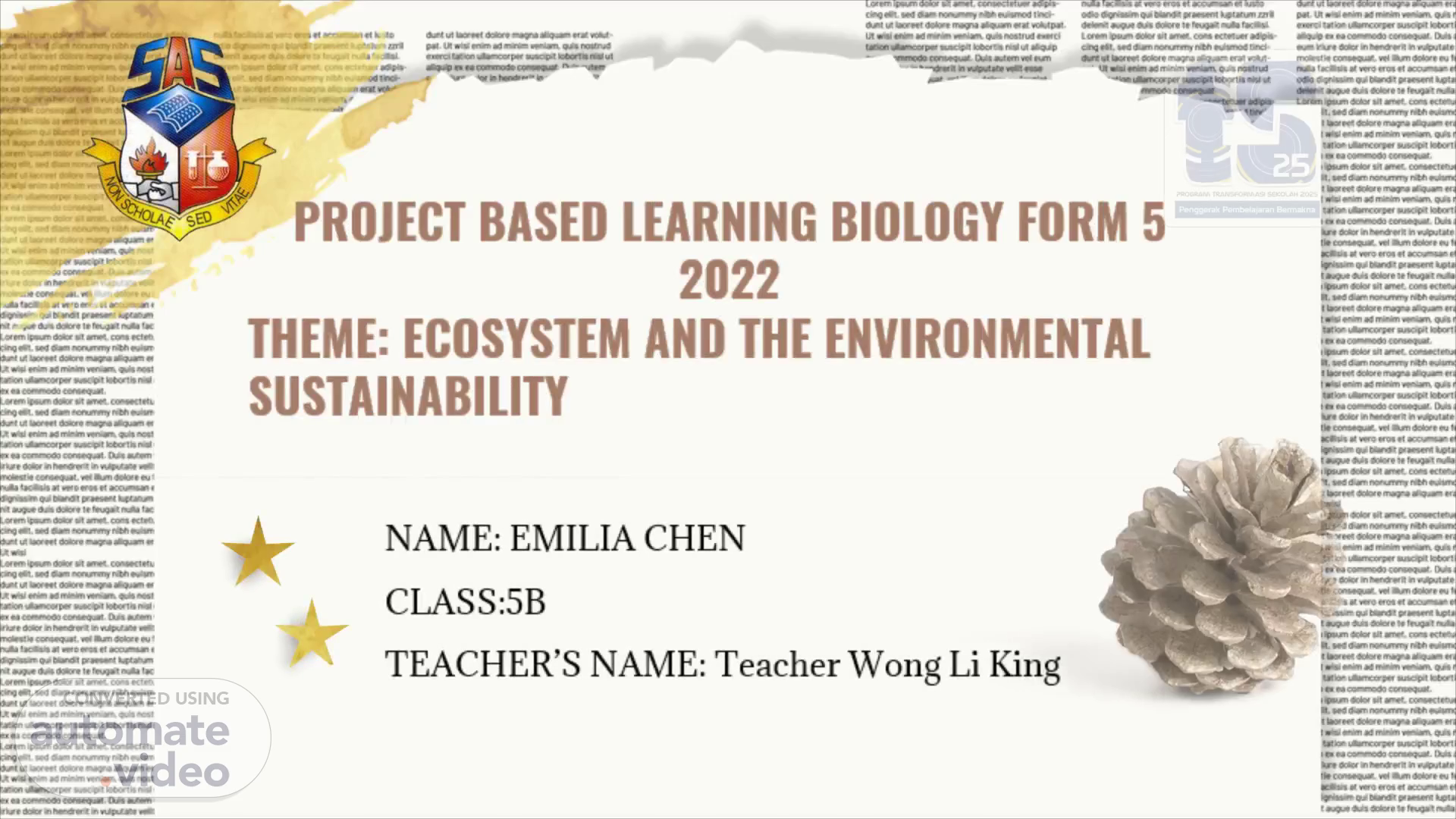
PROJECT BASED LEARNING BIOLOGY FORM 5 2022 THEME: ECOSYSTEM AND THE ENVIRONMENTAL SUSTAINABILITY
Scene 1 (0s)
PROJECT BASED LEARNING BIOLOGY FORM 5 2022 THEME: ECOSYSTEM AND THE ENVIRONMENTAL SUSTAINABILITY.
Scene 2 (12s)
ABSTRACT.
Scene 3 (18s)
Bananas are a popular fruit consumed worldwide with a yearly production of over 165 million tonnes in 2011. Once the peel is removed, the fruit can be eaten raw or cooked and the peel is generally discarded. Because of this removal of the banana peel, a significant amount of organic waste is generated. The banana peels are normally disposed in municipal landfill, which contribute to the existing environmental problems.However this problem can be recovered by producing natural plasticine..
Scene 4 (41s)
INTRODUCTION.
Scene 5 (47s)
INTRODUCTION. Plasticine is a putty-like modelling material made from calcium salts, petroleum jelly and aliphatic acids. Plasticine is used for children's play and as a modelling medium for more formal or permanent structures. However this plasticine may cause allergies. Some people are more sensitive and can develop allergies if they use petroleum-derived product. The plasticine is made up of chemical substances. While natural plasticine is made up of edibles ingredients which we use in cooking in our daily life and it is more safe for children to play..
Scene 6 (1m 12s)
COST.
Scene 7 (1m 18s)
COST. Material Quantity Price (RM) 1 Banana 1 comb 4.60 2 Corn flour 1 packet 2.00 3 Wheat flour 1 packet 3.00 4 Cooking oil 1 bottle 9.20 5 Food colouring 3 bottle 4.80 6 Fine salt 1 packet 1.70 Total RM25.30.
Scene 8 (1m 32s)
LIST OF MATERIALS.
Scene 9 (1m 39s)
S Nation" BLEB(.FR I. TEPUNG JACt.JAU.,. 40g Banana peel.
Scene 10 (1m 51s)
MOMA. oqf. 'Htsuaø vgnae„av 9Nn,BL. Food colouring (3 types of colours).
Scene 11 (2m 3s)
DESCRIPTION OF PROJECT.
Scene 12 (2m 9s)
40g of banana peels are cut into small pieces and dried under the sun..
Scene 13 (2m 19s)
2. The dried banana peel pieces are crushed with a blender into a fine powder(flour)..
Scene 14 (2m 28s)
3. Prepare the materials to make plasticine as follows: Mix the banana powder with corn flour and wheat flour.Mix well..
Scene 15 (2m 39s)
ödö. ööö.
Scene 16 (2m 45s)
b) Add the 30ml of cooking oil, 1 spatula of fine salt and 100 ml of water into the mixture. Mix well. (Salt is used as a preservative to make this natural plasticine last longer). c) If the dough is too sticky, add a little wheat flour..
Scene 18 (3m 7s)
4. Knead the dough until well blended and add a little cooking oil to smooth the surface of the texture..
Scene 19 (3m 17s)
5. Divide the dough into three and drip different food coloring. Knead until the dough color is even. (Dyes can be used from natural sources such as pandan leaf extract, roselle, lemon leaf and telang flower).
Scene 20 (3m 31s)
6. Produce a model using this natural plasticine..
Scene 21 (3m 39s)
REFERENCES.
Scene 22 (3m 45s)
REFERENCES. https://en.wikipedia.org/wiki/Plasticine https://en.wikipedia.org/wiki/Banana_peel https://www.slideshare.net/AkhileshGoyal5/biscuit-using-peel-powder.
Scene 23 (3m 59s)
THANK YOU!. -Emilia Chen.